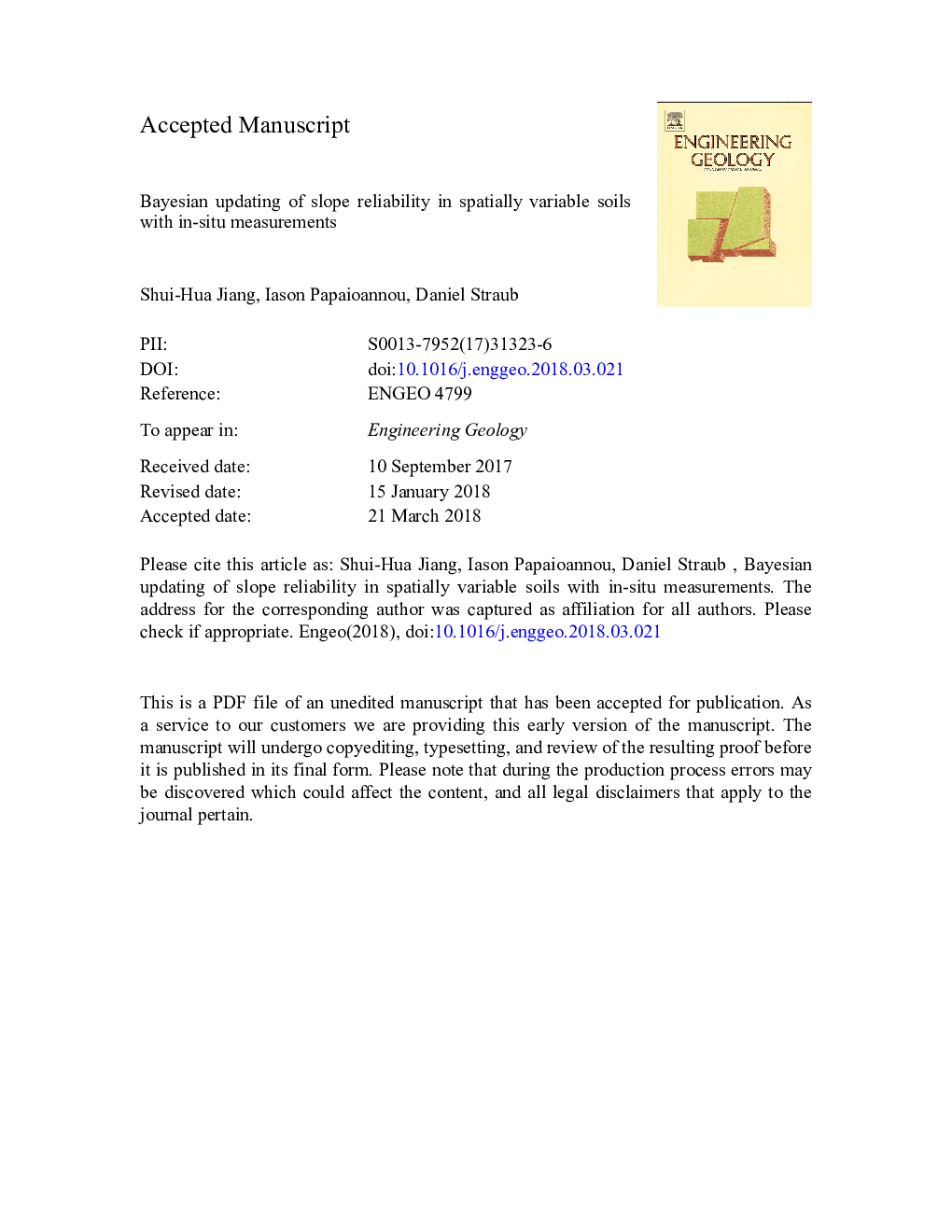| Article ID | Journal | Published Year | Pages | File Type |
|---|---|---|---|---|
| 8915894 | Engineering Geology | 2018 | 30 Pages |
Abstract
In-situ and/or laboratory test data, monitoring data and other site-specific information are a common basis for assessing geotechnical performance. This information enables one to learn the distribution of geotechnical properties and assess the reliability of geotechnical structures. The learning process can be formalized by the application of Bayesian analysis, which makes optimal use of all site-specific information by consistently integrating them in a single model. We explore the application of Bayesian analysis to determine the spatially varying soil properties in a slope from multiple sources of test data. We also assess the effect of borehole location on the resulting probabilistic estimate of slope stability, to inform an optimal test program. The BUS approach (Bayesian Updating with Structural reliability methods) with subset simulation is utilized to learn the distribution of soil properties and predict the slope reliability. For numerical investigations, a saturated clay slope is studied wherein the undrained shear strength su is learned. For a proper characterization of the prior information on su, a non-stationary random field model is developed to account for the depth-dependent nature of su. The results demonstrate that the method is able to efficiently learn the random field and its parameters, as well as update the resulting reliability of the slope.
Related Topics
Physical Sciences and Engineering
Earth and Planetary Sciences
Geotechnical Engineering and Engineering Geology
Authors
Shui-Hua Jiang, Iason Papaioannou, Daniel Straub,
